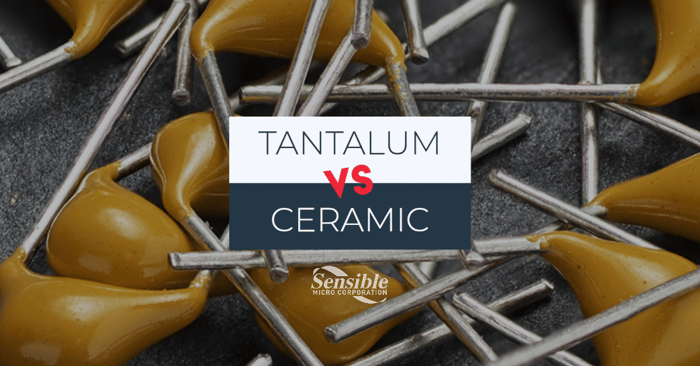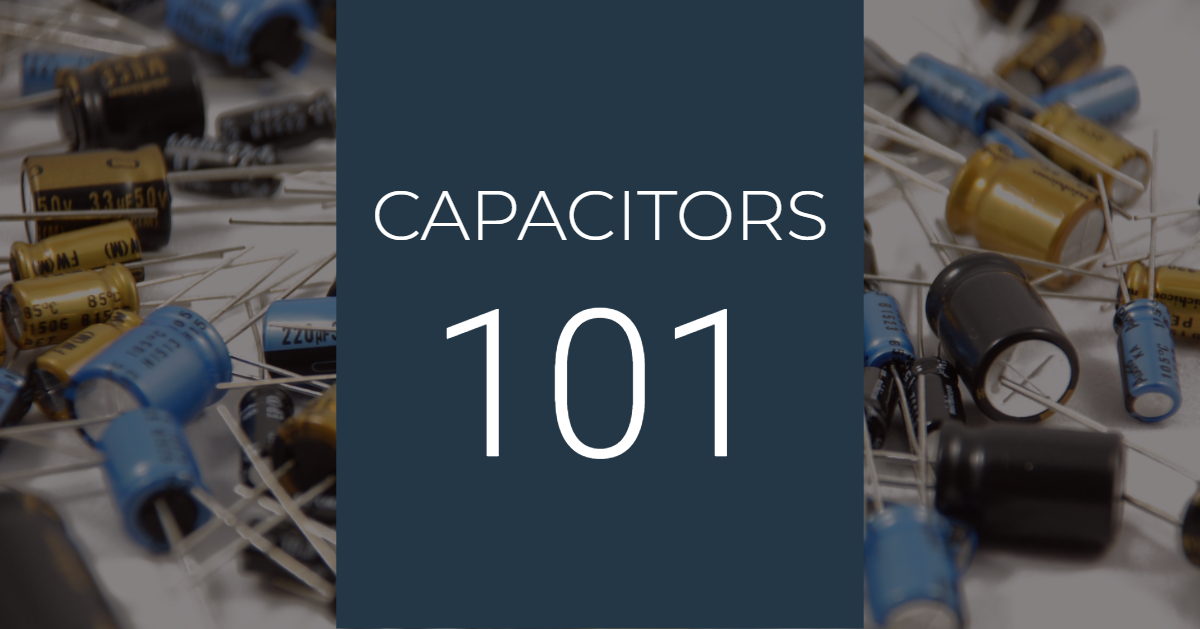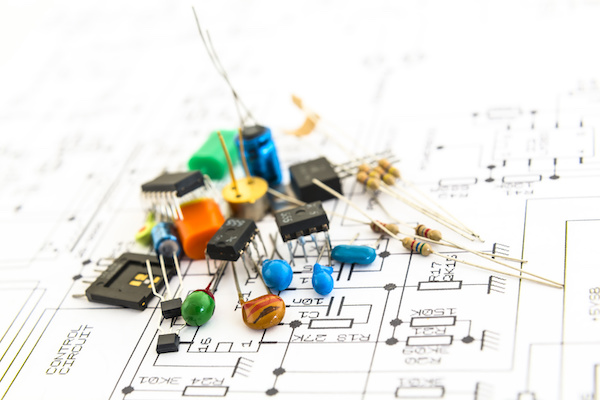The shortage of multi-layer ceramic capacitors (MLCCs) started in 2018 and has been forecasted to continue through this year. Capacitors, especially MLCCs, are a vital part of almost all common electronic devices and, as a result, the capacitor market has become increasingly profitable. The MLCC market alone was expected to grow from $5B USD in 2018 to over $7B USD by 2023.
This ongoing shortage has caused many manufacturers and customers to consider alternatives, with tantalum capacitors being a popular substitute. In many applications, tantalum capacitors can be used in place of MLCCs but this often comes at a higher cost. However, with all the supply chain disruptions and fallout caused by the current COVID-19 pandemic, lead times for tantalums have increased and concerns over a possible tantalum shortage are becoming more valid. As stock becomes harder to procure and the use of alternatives increases, it’s important to know how the different capacitors compare and contrast. In this post we compare tantalum capacitor vs ceramic, the differences between and benefits of the two.
Tantalum & Ceramic Capacitors:
Tantalum capacitors are a subtype of electrolytic capacitors that use tantalum metal for the anode. Tantalum capacitors have superior frequency characteristics and long-term stability. They are known for their virtually unlimited shelf-life and their high capacitance density and reliability. Tantalum capacitors are available in both wet (foil) and dry (solid) electrolytic types, with dry being the most common.
Though tantalum capacitors usually require an external failsafe device to avoid issues caused by their failure mode, they are used in a wide variety of circuits. Some applications include PCs, laptops, medical devices, audio amplifiers, automotive circuitry, cell phones, and other surface-mounted devices (SMD). Tantalums are also a popular replacement for aluminum electrolytics used in military applications because they don’t dry out or change capacitance over time.
Ceramic capacitors use one of the main types of capacitors that use a ceramic material as the dielectric. A known insulator, ceramic was one of the first materials used in the production of capacitors. These capacitors are small in size, having a lower maximum rated voltage and smaller capacitance values. The two most common types are MLCCs and ceramic disc capacitors.
Ceramic capacitors are used in many different applications and are most commonly used in personal electronic devices. MLCCs alone are the most produced capacitors, being used in approximately 1B electronic devices per year. Some use cases include printed circuit boards (PCBs), induction furnaces, DC-DC converters, and power circuit breakers. Ceramic capacitors are often used as general-purpose capacitors because they are not polarized and come in a large variety of capacitances, voltage ratings, and sizes.
In capacitor manufacturing, some key players include:
- Abracon
- AVX
- Johanson Dielectrics
- Murata
- Vishay
- Kemet
- Panasonic
- TE Connectivity
Tantalum Capacitors vs Ceramic:
Although both tantalum and ceramic capacitors are similar in their function, they are very different in their construction techniques, materials, and performance.
In terms of capacitor performance, tantalums and ceramic capacitors differ in a few key ways:
-
Aging:
When it comes to capacitors, a logarithmic decrease in capacitance over time is referred to as aging. Ceramic capacitors do age while tantalums do not. Tantalum capacitors do not even have a known wear-out mechanism. -
Polarization:
Tantalum capacitors are typically polarized. This means that they can only be connected to a DC energy supply observing the correct terminal polarity. Ceramic capacitors, on the other hand, are non-polarized and can be safely connected to an AC source. By not being polarized, ceramic capacitors have a better frequency response. -
Temperature Response:
When subjected to changes in temperature, tantalum capacitors usually show linear capacitance change while ceramic capacitors usually have a non-linear response. However, ceramic capacitors can be made to trend linearly by narrowing the operating temperature ranges and accounting for the temperature response during the design phase. -
Voltage Response:
When looking at capacitance changes with applied voltage, tantalum capacitors show consistent stability whereas ceramic capacitors do not. In response to higher applied voltages, the permittivity of the dielectric shrinks within the ceramic capacitor and causes changes in capacitance. Though the changes in capacitance of ceramic capacitors are usually linear and can be easily accounted for, some higher permittivity dielectrics can lose 70% or so of their initial capacitance when operated at rated voltage.
Tantalum capacitor vs ceramic parameters:
|
Capacitor Parameter: |
Tantalum Capacitors: |
Ceramic Capacitors: |
|
Aging Performance |
✔ |
|
|
DC Bias Dependency |
✔ |
|
|
Equivalent Series Resistance (ESR) Stability |
✔ |
|
|
High-Frequency Filtering |
✔ |
|
|
Low Inductance |
✔ |
|
|
Microphonic (Piezoelectric) Effect Response |
✔ |
|
|
Temperate Range & Response |
✔ |
|
|
Volumetric Efficiency |
✔ |
Sourcing Capacitors:
With the MLCC shortage causing increased demand for tantalums and the recent global supply chain disruptions, a tantalum capacitor shortage is becoming increasingly more probable. Those factors, coupled with operational changes and production transfers by major manufacturers, are causing lead times on tantalum orders to become much longer. Although tantalums and other capacitors might become harder to procure, there are ways to circumvent the loss of production due to component shortages. Here at Sensible Micro, we maintain a global sourcing network of vetted suppliers to help you find the parts you need. We also keep a wide variety of ready-to-ship components in stock and our internal sourcing team works hard to find potential alternate manufacturers or “crossing” opportunities for commodity-type components. If you need help sourcing capacitors, schedule a call with one of our sourcing solutions experts today!
Stay on top of the latest developments in the industry and in our community by subscribing to the Sensible Micro blog!



















